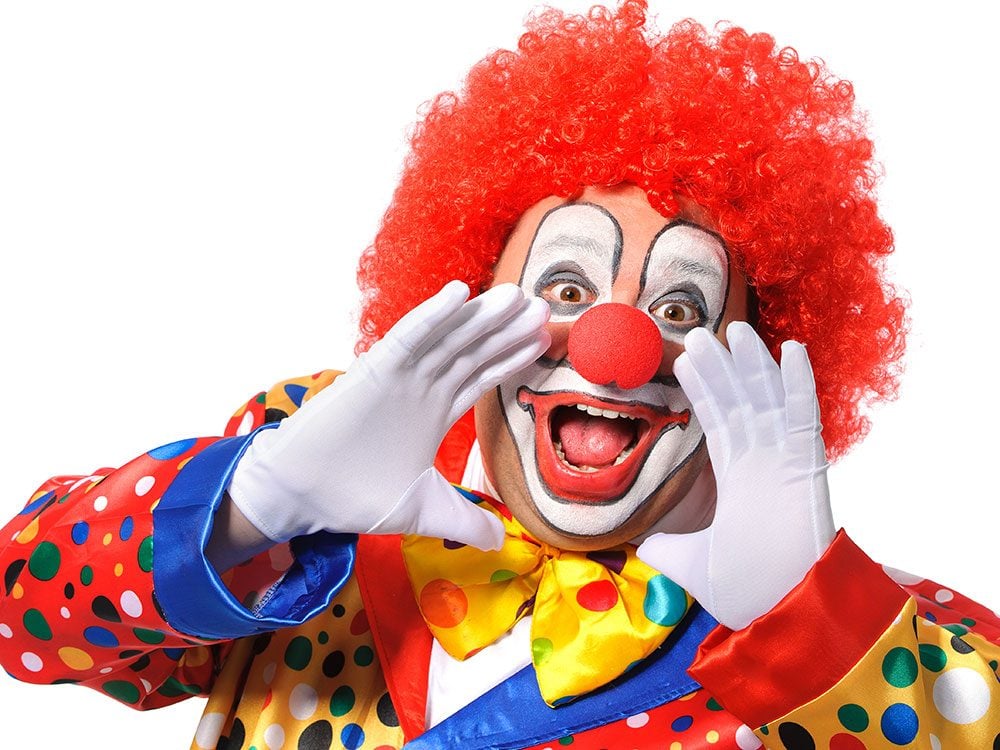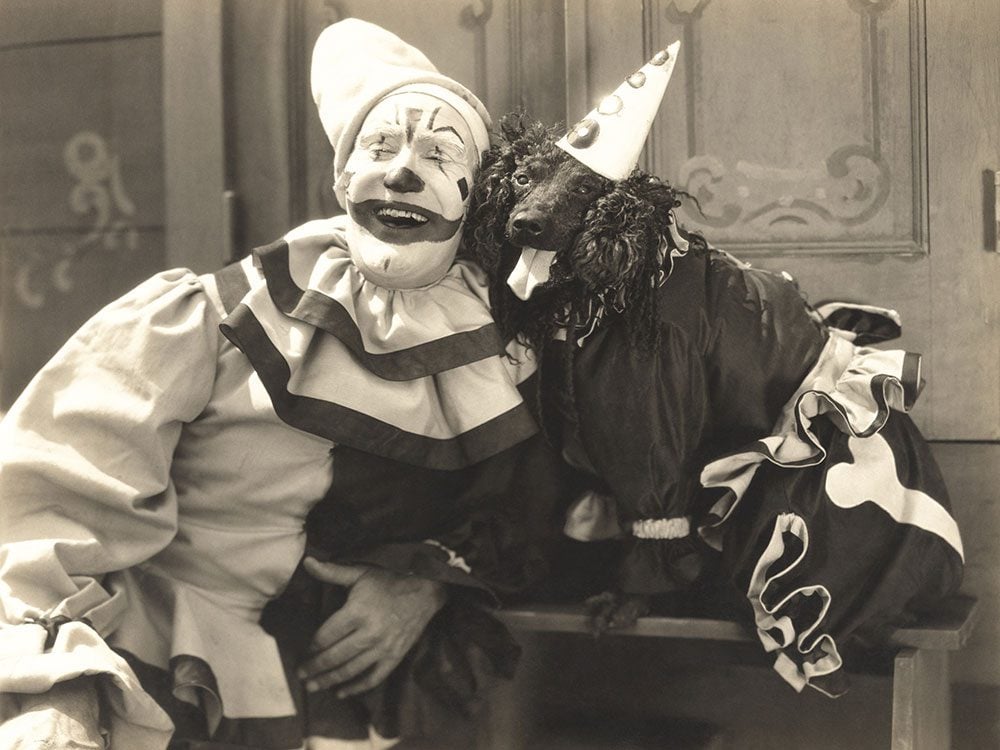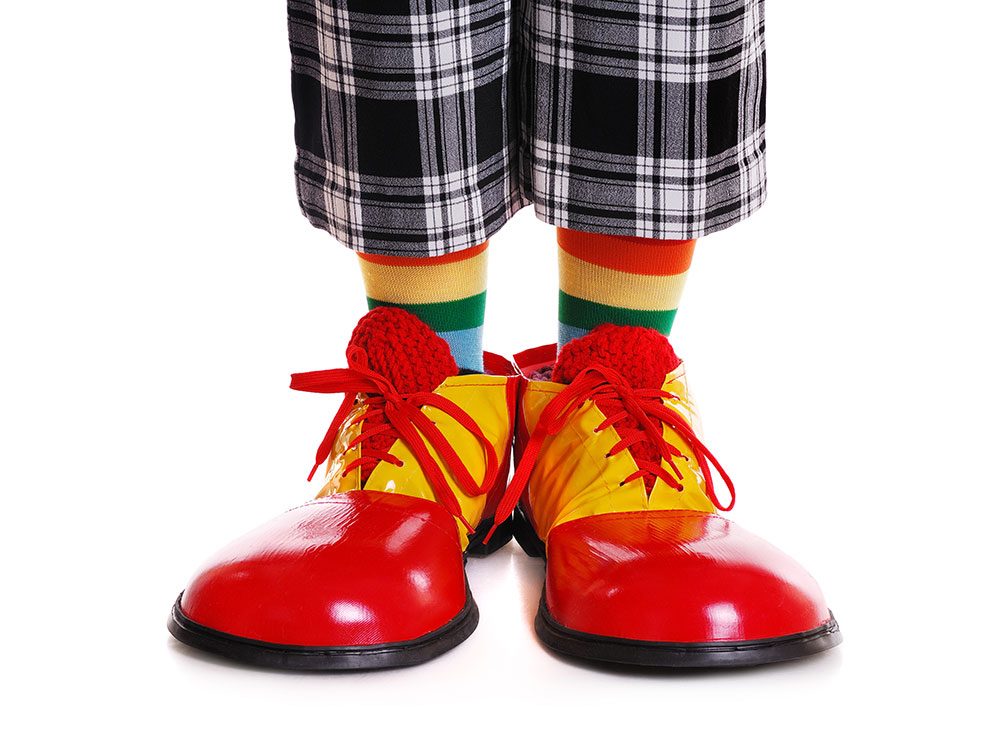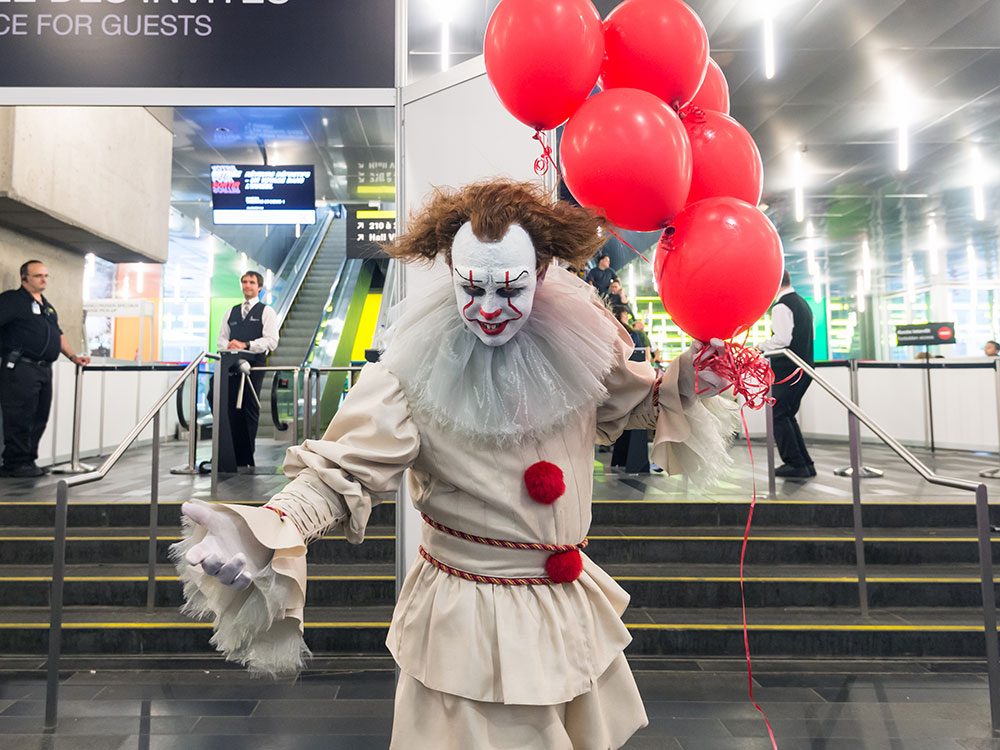
The Science Behind Coulrophobia: The Fear of Clowns
A stranger disguised in garish face paint, with awkwardly proportioned body parts and a penchant for maniacal laughter… It’s not without reason that so many of us find clowns a tad, erm… Unsettling. In fact, an empirical study by a team at Knox College in Illinois found clowns topped the list when it came to creepiest ranked professions, edging out taxidermists (take that, Norman Bates!). There’s even a special term for the condition of being morbidly freaked out by clowns: coulrophobia. The list of symptoms include nausea, feelings of dread, accelerated heartbeat, and, as most every child can attest, many, many tears.
Making matters worse for Bozo and his buds, those notorious “killer clown” sightings which peaked in 2016 began cropping up again following the big-screen release of IT, adapted from Stephen King’s novel of the same name. The film tells the story of an evil entity whose preferred form is Pennywise the Clown and whose hobbies include devouring children in between 27-year-long naps.
While we might have King to thank for adding clowns to the ranks of pop culture’s greatest horror icons, he’s adamant that IT is not to blame for making them scary. In a Tweet from April 2017, King stated, “The clowns are pissed at me. Sorry, most are great. BUT…kids have always been scared of clowns. Don’t kill the messengers for the message.”
And King may be right, if a recent scientific study is to be believed…

Clowns are Designed to Unsettle
In a University of Sheffield study of more than 250 children between the ages of four and 16, researchers found that a resounding majority expressed a dislike of clowns being part of hospital décor. Dr. Penny Curtis, who led the study, elaborated on the findings, noting that “Some found them frightening and unknowable.”
According to Valérie De Courville Nicol, professor in the department of Sociology and Anthropology at Concordia University, this may be because clowns, by their very nature, are designed to unsettle. They deviate from social norms in most every respect, breaking all the rules when it comes to acceptable behaviour and appearance.
“They act out a lot of what’s suppose to remain hidden, they’re too emotional, their timing is off and their reactions are unanticipated and unusual,” says De Courville Nicol. That instability is what freaks us out, and can result in all sorts of emotional reactions, from laughter to terror, she explains.
“The clown turns the world upside down. It shows us what’s taboo, what we’re defending against emotionally and what we’re repressing,” she says. “This makes it powerful in a therapeutic sense, and as a horror device.”
Check out 20 strange phobias you’ve never heard of.

We Don’t Like Things That Are Uncanny
Sigmund Freud theorized that things we find strangely familiar come across as eerie, and referred to this phenomenon as “the uncanny.” Because clowns are recognizably human, but their features are grossly distorted—think red nose, big shoes, permanent smile, etc.—they can be classified as uncanny figures. This is compounded when the roles normally associated with them (entertaining people) are subverted (killing people).
“The entire horror movie industry plays with the uncanny,” says De Courville Nicol. “It takes something with which we’re familiar and distorts it or places it in the wrong contexts.”
On top of this is the knowledge that underneath the costume is an actual person; one we do not—and cannot—know. It’s not just the grease paint that hides the clown’s identity, either. “Clowns are disguising their personalities as well as their background and their voice,” says De Courville Nicol. “We don’t know who we’re dealing with, and that ultimately produces uncertainty.”
For more goosebumps, check out these stories of urban legends that turned out to be true.

Pop Culture’s Favorite Psychopath
Then of course there’s the evil clown as a figure in popular culture. In addition to IT‘s Pennywise, sinister clowns have stalked the silver screen screen in countless forms, from The Dark Knight‘s The Joker to Killer Klowns From Outer Space.
Stretching further back, there’s Pagliacci, the sad clown who kills his wife, and real-life sad clown Joseph Grimaldi, whose memoirs, written by a young Charles Dickens, tell the story of a man who destroys himself to make his audiences laugh.
Simple exposure to these cultural representations of the clown—particularly as a child—can understandably set the stage for full-blown coulrophobia.
“If you’ve been exposed to mostly negative representations of clowns, it’s likely you’ll form negative associations,” says De Courville Nicol. “It becomes a question of the strength of the pop culture phenomenon and the feelings it brings.”
Now that you know why clowns are creepy, find out your biggest fear according to your zodiac sign.